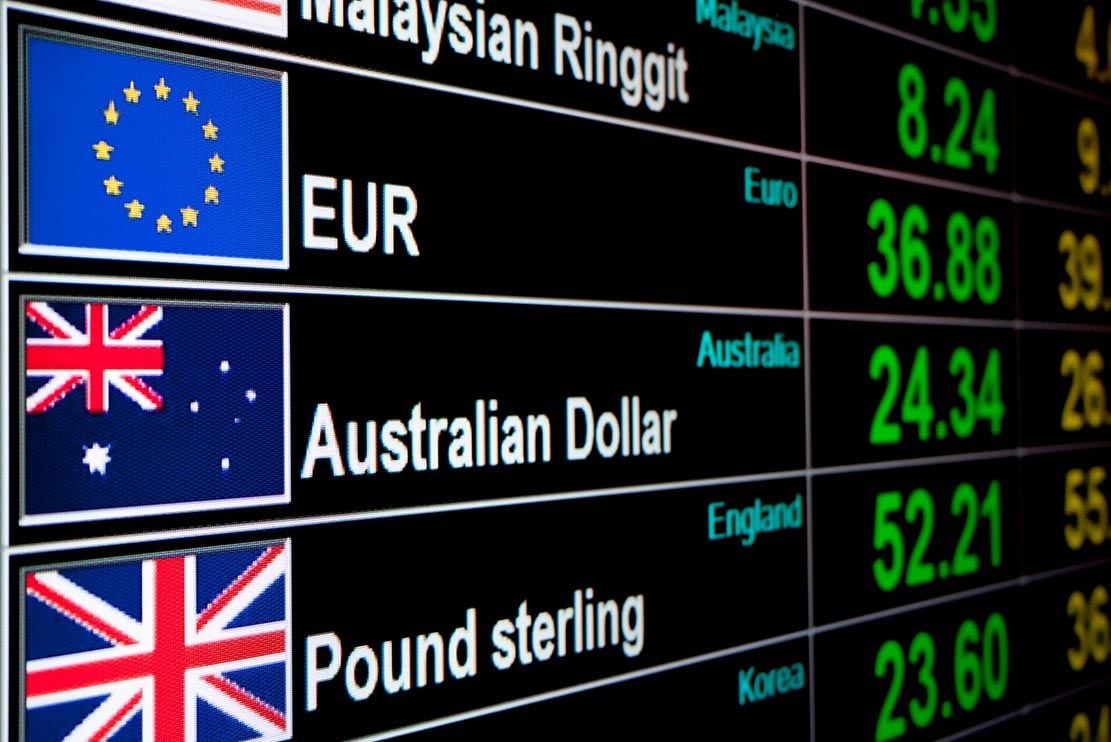Australian Dollar Strength Set to Push GBP/AUD to 2021 Lows says CBA
- Written by: Gary Howes
-
- GBP/AUD approaches lowest in two years
- As AUD maintains best performer status
- Amidst strong global commodity prices
- Heated RBA hike expectations a potential headwind

Image © Adobe Stock
The Australian Dollar's stellar 2022 performance is likely to extend say currency analysts eyeing a resolutely supportive global economic backdrop which continues to underpin the Australian economy and its currency.
The Australian Dollar has advanced against all its G10 rivals over the course of the past month and is also 2022's best performer, having appreciated by 6.5% against the Euro, 6.0% against the Pound and 3.34% against the U.S. Dollar.
"The GBP/AUD has fallen sharply over the past week and could soon test the 2021 low of 1.7429," says Kristina Clifton, FX Strategist at Commonwealth Bank of Australia.
The Pound to Australian Dollar exchange rate (GBP/AUD) is at 1.7550 as of publication, the 2022 low is at 1.7528 and the 2021 low of 1.7429 was reached on January 07, 2021.
"The Australian economy is less exposed to the war than the UK. Higher commodity prices are also a windfall for Australia, unlike the UK which is a net importer of energy," says Clifton.
Above: GBP/AUD since 2022.
- GBP to AUD reference rates at publication:
Spot: 1.7550 - High street bank rates (indicative band): 1.6934-1.7057
- Payment specialist rates (indicative band): 1.7390-1.7460
- Find out about specialist rates, here
- Set up an exchange rate alert, here
Australian Dollar gains come amidst the ongoing geopolitical tremors caused by the Russian invasion of Ukraine which has pushed global commodity prices higher, leaving commodity exporters such as Australian and New Zealand as outright winners of the crisis.
"AUD/USD has consolidated just above 0.7500. The fall in the USD and still high commodity prices supports AUD/USD from its material undervalued starting point. In our view, a decisive break above the 0.7516 resistance may see AUD build further gains to near 0.7673," says Clifton.
"We have had a longstanding bullish bias on AUD. We see no reason to change this view," says Richard Kelly, Head of Global Strategy at TD Securities, "especially as the world endures real-time structural change in commodity supply chains."
The rise in global gas prices are proving particularly supportive for Australia's terms of trade; the 2021-2022 rebalancing of the Reserve Bank of Australia's index of commodity prices (ICP) saw LNG and crude oil account for 20% of the basket.
Gas prices surged again this week as Russian President Vladimir Putin injected a fresh dose of uncertainty into the market by demanding 'unfriendly' countries pay for gas in Roubles.
The move underscores an inevitable requirement for existing long-term gas supply contracts to be rewritten, meaning one remaining anchor to price stability in the sector will come unstuck.
New contracts will inevitably be priced higher and this has the effect of underpinning elevated global energy prices.
"The external tailwinds appear to be strengthening for the Australian economy," says Geoff Yu, FX and Macro Strategist for EMEA at BNY Mellon.

Above: GBP performance in 2022.
Secure a retail exchange rate that is between 3-5% stronger than offered by leading banks, learn more.
Foreign exchange strategists note that countries that are net exporters of energy are likely to see their currencies better supported against countries that are net importers.
"From the price effect alone, in theory we would expect AUD to remain one of the main beneficiaries of the global inflationary (or stagflationary) environment," says Yu.
China has meanwhile responded to global and domestic headwinds by committing to expand support for the economy, ensuring Australia's most important market will remain a reliable buyer of Australian exports.
A key risk to the near-term outlook however is China's Covid situation worsening as authorities continue to pursue a 'zero Covid' approach in the face of the highly contagious Omicron variant, that could see more cities and regions locked down.
But the negative impact on Australian exports to China and the Aussie Dollar would invariably be limited given Chinese shutdowns ultimately hurt global supply chains further.
And what the past two years have taught us is when global supply chains are squeezed inflation only accelerates.
"The zero Covid policy is extremely inflationary in nature, as it limits the supply of both goods, services and labour," says Andreas Steno Larsen, Director and Head of Research at Heimstaden.
Given the Australian Dollar is proving a beneficiary of a high inflation global backdrop, further support is therefore likely.
{wbamp-hide start}
{wbamp-hide end}{wbamp-show start}{wbamp-show end}
The Reserve Bank of Australia is meanwhile likely to raise interest rates over coming months, providing additional support to its currency via the bond yield channel.
International capital goes were returns on bonds are attractive, or are set to become more attractive.
Rates at the RBA remain at record lows but markets are betting hikes are inevitable given the strong domestic economy and rising inflation in Australia and globally.
123 basis points of hikes are expected from the RBA in 2022, which is elevated when contrasted to the guidance offered by the RBA which retains a cautious guidance.
The RBA is proving resistant to pursuing higher rates, wanting to see a more material pick up in wages before doing so.
But markets are calling their bluff and the Aussie Dollar has been supported as a result.
An obvious risk to the currency's outlook therefore comes if the RBA doesn't budge from their stance and market pricing proves overly aggressive, triggering an inevitable retracement in rates and the Aussie Dollar.
However, weakness is likely to be limited given the overwhelmingly supportive geopolitical shifts and commodity market disruptions 2022 has delivered.






